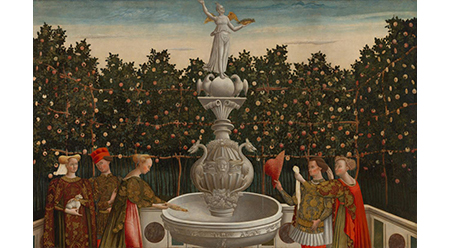 A major new exhibition at the National Gallery of Victoria, Love: Art of Emotion 1400–1800 will celebrate and explore one of humankind’s most complex emotions, love, as seen through the eyes of European artists from 1400 to 1800.
A major new exhibition at the National Gallery of Victoria, Love: Art of Emotion 1400–1800 will celebrate and explore one of humankind’s most complex emotions, love, as seen through the eyes of European artists from 1400 to 1800.
Produced in collaboration with the ARC Centre of Excellence for the History of Emotions, Love: Art of Emotion 1400–1800 features more than 200 artworks from the NGV’s permanent collection, spanning painting, sculpture, prints and drawings, costume, furniture and religious artefacts. Traversing the Medieval to the Romantic period, Love: Art of Emotion examines the ever-shifting and multifaceted expressions of a subject of perennial interest to artists and society alike.
“Love: Art of Emotion reveals hundreds of powerful depictions of love in art from 1400 to 1800, from Antonio Vivarini’s much-celebrated painting The Garden of Love, c. 1465-1470 to an intricately carved 16th century wedding dowry chest,” said Tony Ellwood, Director NGV. “Drawn from every area of the National Gallery of Victoria’s collection, this exhibition will offer an incredibly rich and diverse display of works, placing the NGV’s holdings in surprising new contexts.”
Love: Art of Emotion 1400–1800 traces the cycle of love through three thematic sections: Anticipation, Realisation and Remembrance. In Anticipation, which focuses on the emergence of love with works that depict courtship, flirtation and seduction, viewers will encounter porcelain sculptures of Venus and her son Cupid alongside delicate folding fans, often gifted as love tokens throughout the 1700s, among other artworks.
Realisation will examine acts of love: marriage, motherhood, religious ceremonies and charities, through poignant works like Cornelis de Vos’s tender family portrait Mother and Child, 1624, and a 1791 English silk wedding dress.
The final section, Remembrance, is devoted to love’s complex relationship to memory, longing and sentiment. A diverse range of works will be revealed including delicate pieces of mourning jewellery, which were intrinsic to the mourning ritual by the mid-1600s, incorporating lockets of loved ones’ hair and images of Romantic symbols of mortality such as urns and weeping willows.
The exhibition considers love in relation to associated emotions such as desire, wonder, ecstasy, affection, compassion, envy, melancholy, longing and hope, as well as the ways in which these combine and intersect.
Love: Art of Emotion 1400–1800
NGV International, 180 St Kilda Road, Melbourne
Exhibition: 31 March – 18 June 2017
Free admission
For more information, visit: ngv.melbourne or www.historyofemotions.org.au for details.
Image: Antonio Vivarini (studio of), The Garden of Love (c. 1465-1470), oil, tempera and gold on spruce panel 152.5 x 239.0 cm.National Gallery of Victoria, Melbourne. Felton Bequest, 1948
